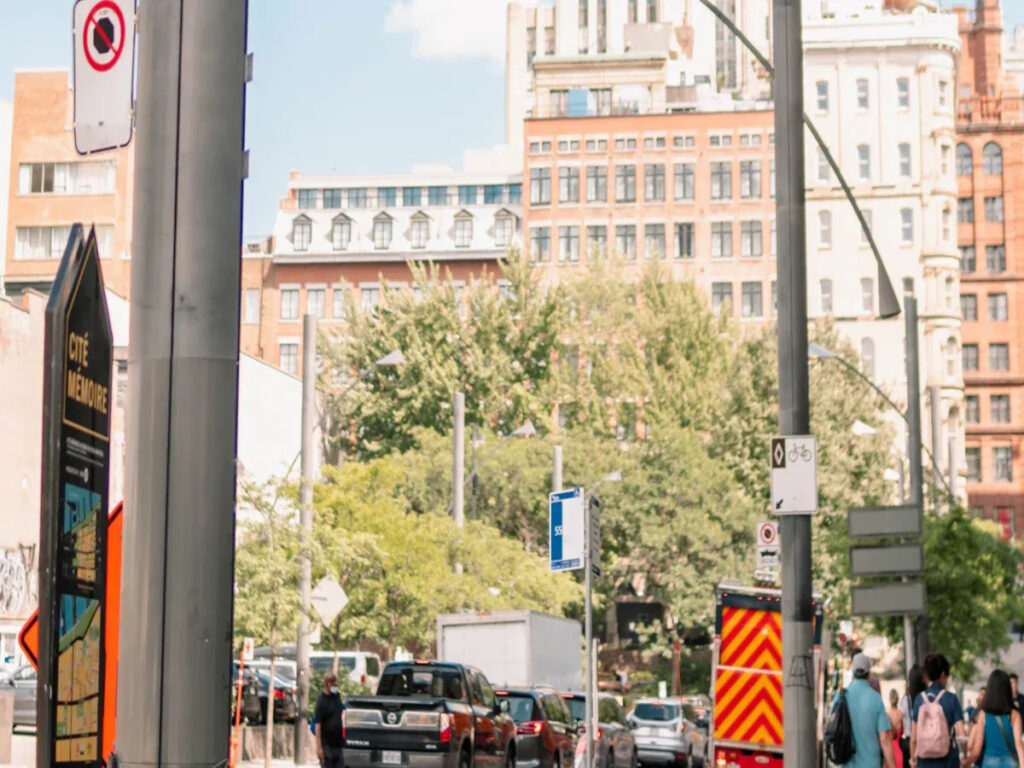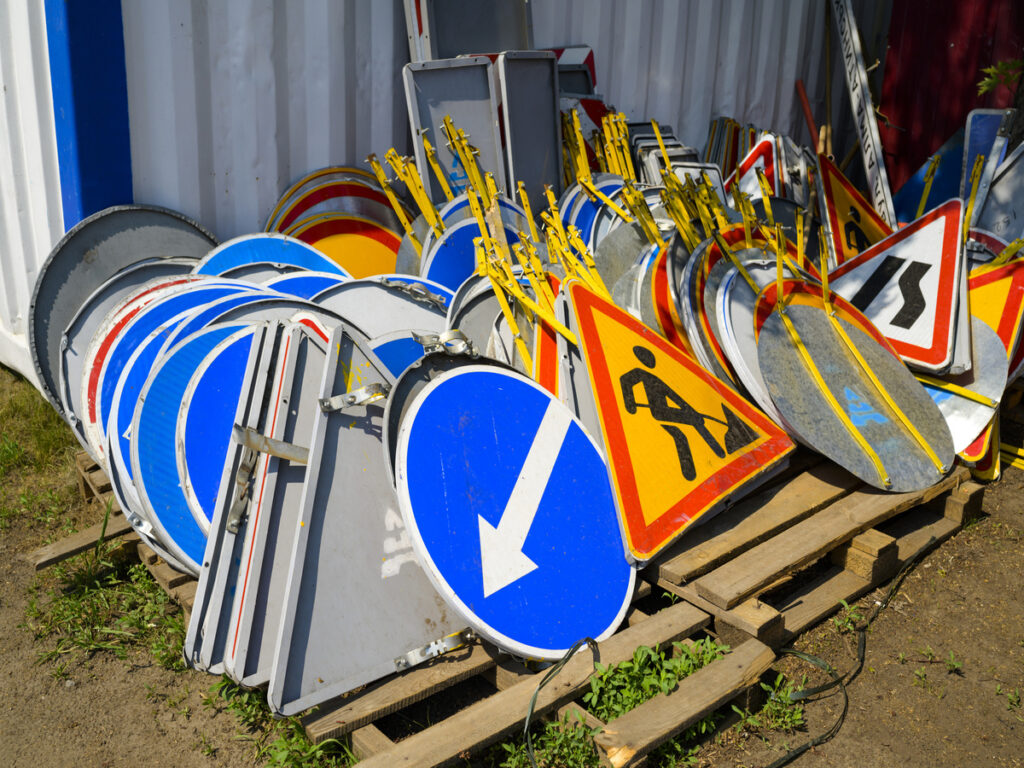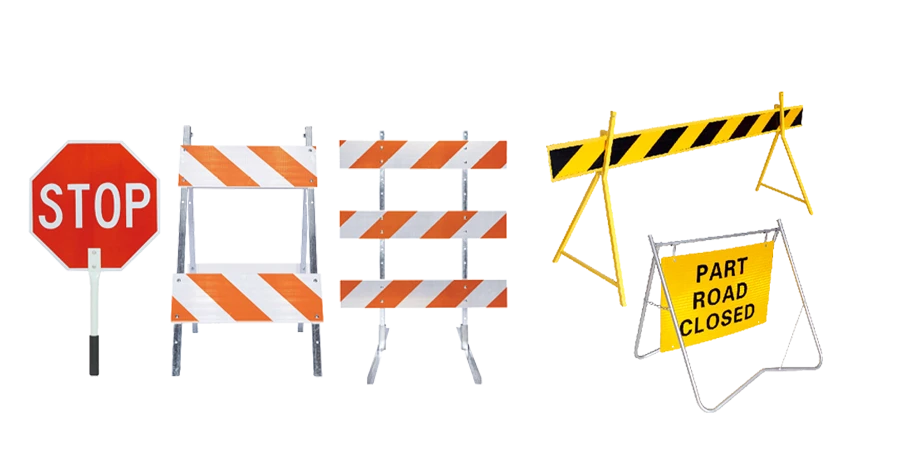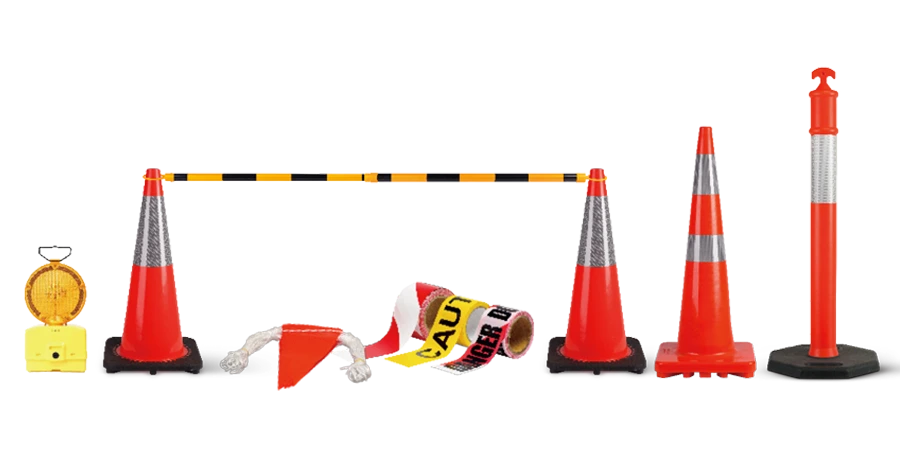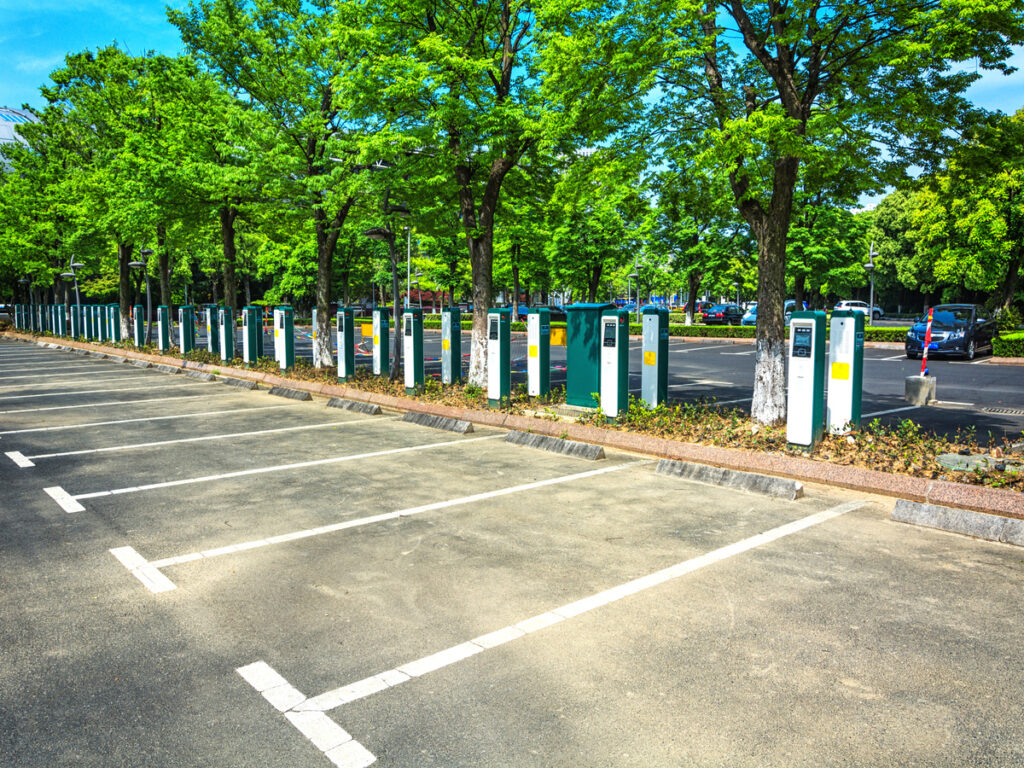
Electric cars are changing how people travel, with sales rising fast. In early 2022, over 2 million were sold, up 75% from last year. Neighborhoods now need better ways to handle this growth safely. Parking lot delineators help by organizing parking spaces and keeping areas safe. These traffic safety delineators show clear parking spots, stop overcrowding, and direct cars to chargers. This makes things safer and easier for people with electric cars.
OPTRAFFIC offers durable and efficient parking lot delineators designed to streamline parking and enhance safety in areas with increasing electric vehicle use. OPTRAFFIC high-visibility traffic safety products help prevent congestion, guide drivers to EV charging stations, and create organized, safe parking environments for all road users. With OPTRAFFIC, neighborhoods can keep pace with the rise in electric vehicles while promoting smoother, safer travel for everyone.
Key Takeaways
- Parking lot markers help organize spaces, reducing confusion and improving safety for EV drivers.
- Reflective markers are easier to see at night, making parking safer for drivers and walkers.
- Markers stop non-EV cars from parking in EV spots, so EV drivers can charge without waiting.
- Taking care of markers keeps them working well and reduces the need to replace them.
- Smart markers with IoT tech can help manage traffic and keep areas safer by giving live updates to drivers.
Understanding Parking Lot Delineators
Definition and Purpose
Parking delineators help organize and control car movement in parking lots. These tools, made from strong materials, act as clear markers. They guide cars and show boundaries. As per industry terms:
| Term | Definition | Purpose |
|---|---|---|
| Delineator | A visible marker placed to guide traffic or set boundaries. | To direct cars and mark areas in parking spaces. |
| Temporary traffic control devices | Tools used to redirect or limit traffic flow. | To handle traffic in different situations. |
In residential EV charging areas, delineators make sure cars park in the right spots. This reduces confusion and keeps the area safe. They also enforce parking rules by marking zones and stopping misuse of EV charging spaces.
Types of Parking Delineators
There are different types of parking delineators for various needs. Common ones include:
- Flexible Delineators: Best for busy or accident-prone areas. They bend on impact, lowering repair costs.
- Reflective Delineators: These have reflective strips for better visibility day and night. They keep drivers and pedestrians safe.
- Temporary Delineators: Portable and used for short-term needs like events or repairs.
Each type helps create neat parking spaces, ensuring cars follow rules and reducing crowding.
Role in Parking Management
Parking delineators keep order in residential EV charging areas. They mark parking spots so cars park correctly. This stops delivery trucks or non-EVs from using EV charging spaces. By guiding traffic, they reduce jams and improve safety for everyone.
Delineators also protect important areas like fire lanes, keeping them clear for emergencies. Their tough materials last long, cutting replacement costs. This makes them a smart choice for residential parking.
Tip: Use reflective delineators to improve safety and visibility, especially at night.
Enhancing EV Charging Safety with Parking Lot Delineators
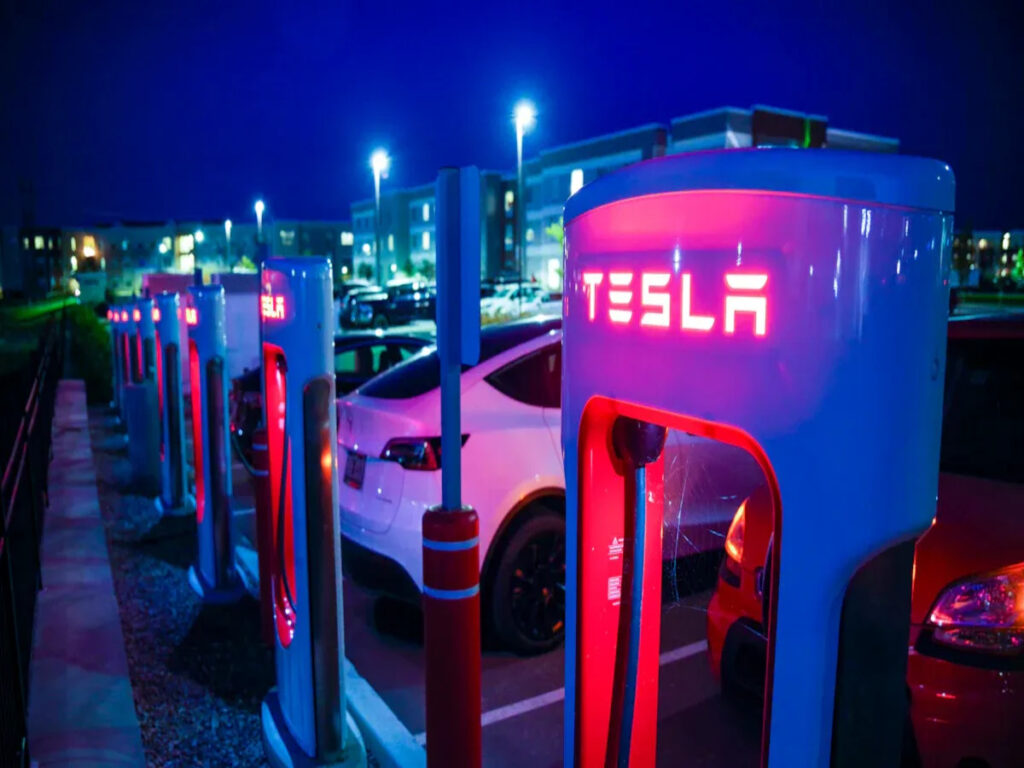
Preventing Accidents and Confusion
Parking delineators help reduce accidents and confusion in EV charging areas. They mark parking spots and traffic lanes clearly. This helps drivers park correctly and avoid blocking chargers. Reflective delineators are useful at night or in dim light. They make parking zones easy to see and safer to use.
Research shows delineators, like painted chicanes, slow down cars. Slower speeds make parking lots safer for everyone. Cars parked on both sides of the road also help drivers stay alert. These steps make EV charging areas safer for drivers and pedestrians.
Tip: Use flexible delineators in busy areas to avoid damage and keep boundaries clear.
Ensuring Safe Navigation for EV Owners
Parking in residential areas can be tricky with limited space. Delineators create clear paths and EV charging zones. This helps EV owners find chargers quickly and safely.
Delineators stop non-EV cars from parking in charging spots. This prevents delays and frustration for EV owners. They also keep fire lanes open for emergencies. This ensures quick access for emergency vehicles when needed.
Delineators also lower fire risks by spacing cars away from chargers. This prevents overheating or electrical problems that could cause fires. These steps improve safety at EV charging stations.
Mitigating Risks in Parking Structures
Parking structures often have tight spaces and poor airflow. Delineators help by organizing parking and improving traffic flow. They guide cars to park neatly, reducing jams and accidents.
Delineators also lower fire risks by keeping chargers clear. This is vital in enclosed spaces where fires spread faster. They ensure emergency vehicles can enter without delays. Quick access is key during fires or medical emergencies.
By using delineators, parking areas become safer and more efficient for everyone.
Note: Check delineators regularly to keep them working well and safe.
Improving Efficiency in Residential EV Charging Stations
Optimizing Space Utilization
Parking delineators help use space better in crowded areas. They mark parking spots clearly to stop delivery trucks and non-EVs from taking EV spaces. This helps residents park closer to their homes without trouble.
- Delineators make parking zones neat and easy to use.
- They guide cars to the right spots, reducing overcrowding.
- Clear markings help EV owners find chargers without confusion.
Using traffic delineators improves parking efficiency for everyone. These tools make sure all space is used well, helping both EV owners and other residents.
Tip: Check delineators often to keep them visible and useful.
Managing Traffic Flow
Good traffic flow is key for EV charging stations. Parking delineators show cars where to go, cutting down on jams and making things safer. Studies prove that delineators and road markings help drivers move smoothly.
| Study | Findings | Impact on Traffic Flow |
|---|---|---|
| Jennings and Demetsky | Post-mounted delineators improved speed and lane placement. | Better traffic organization |
| Gates et al. (2004) | Fluorescent chevron signs reduced edge line crossing. | Improved flow indirectly |
| Montello (2009) | Crash rates dropped after adding delineators. | Safer and smoother traffic |
Delineators create organized systems that reduce delays and help cars move easily. This is especially helpful in busy EV charging areas.
Note: Add reflective materials to delineators for better visibility at night or in dim light.
Preventing Unauthorized Parking
Unauthorized parking in EV spots causes problems for EV owners. Parking delineators act as barriers to keep non-EVs out of these spaces.
- Delineators mark EV-only zones to enforce parking rules.
- They stop non-EVs from using charging spots.
- Keeping order reduces frustration and makes charging stations work better.
Adding delineators ensures fairness and easy access for EV owners. This helps them use chargers without delays caused by unauthorized parking.
Callout: Use flexible delineators in busy areas to avoid damage while keeping boundaries clear.
Effective Implementation of Parking Delineators
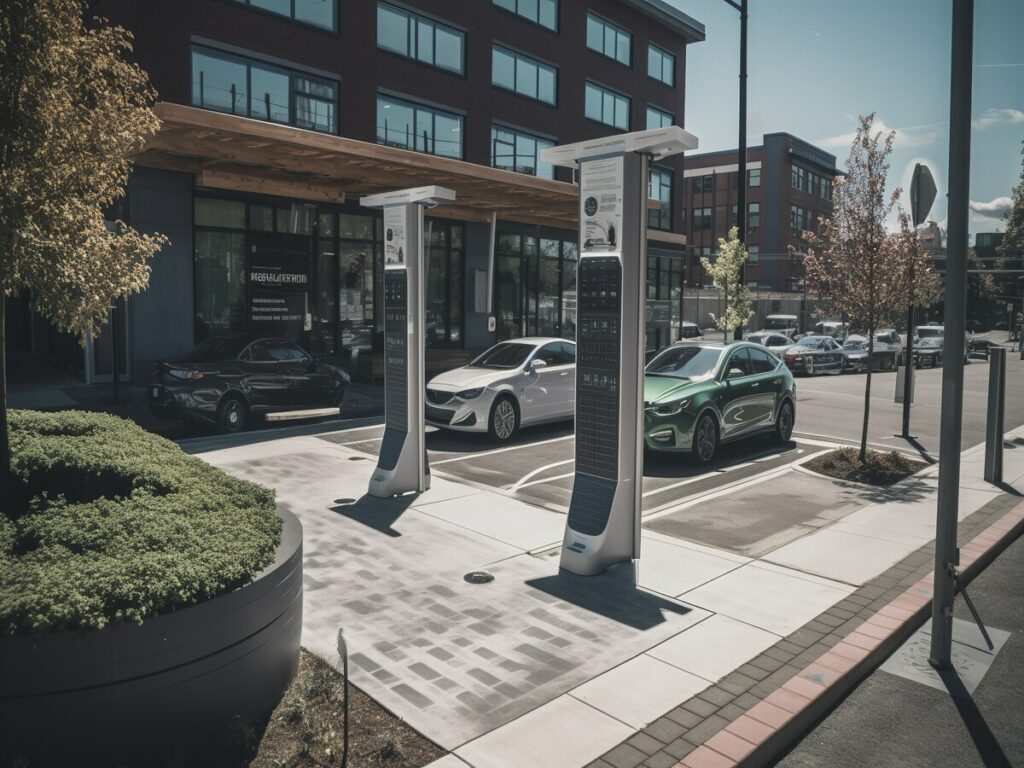
Strategic Placement in Charging Areas
Placing parking delineators smartly helps EV stations work better. Put delineators around chargers to keep cars from blocking them. They guide cars to the right spots, reducing traffic jams.
In neighborhoods, place delineators near entrances and exits. This helps drivers park easily and follow rules. Use them to separate EV spots from regular parking spaces. This makes it simple for EV owners to find chargers fast.
Good placement also lowers fire risks by spacing cars safely. It stops overheating and allows emergency vehicles to reach chargers quickly.
Tip: Add reflective delineators in dark areas for better safety.
Integration with Signage and Lighting
Using delineators with signs and lights makes parking safer. Signs explain rules, and lights help drivers see at night. Together, they keep EV stations organized and secure.
Research shows delineators can cut curb crowding by 40%. Adding cameras improves safety by stopping illegal parking and theft. Cameras lower parking lot crimes by 51%. This setup helps both EV owners and other residents.
Smart parking systems can show open charging spots in real time. Paired with delineators, they help drivers park faster. This reduces stress and makes parking easier for everyone.
Callout: Place cameras near chargers to improve safety and enforce rules.
Maintenance for Long-Term Efficiency
Taking care of traffic delineators keeps them working well for years. Check them often for damage or wear and replace broken ones quickly.
Clean delineators to keep them visible, especially reflective ones. This helps drivers see parking zones clearly. Update signs and lights when needed to keep things organized.
Smart parking systems need software updates to stay accurate. These updates improve monitoring and help drivers find spots easily. By maintaining everything, you create a parking system that works for everyone.
Note: Plan regular checks to keep delineators and systems in good shape.
Future Trends in Parking Lot Delineators
Smart Delineators and IoT Integration
Smart delineators are changing parking with IoT technology. They use sensors and LED lights to improve safety and visibility. These tools collect real-time data to manage traffic better. For example, they track traffic flow and weather to help drivers park easily. Cities like Singapore already use this data to control traffic, showing how smart delineators fit into city systems.
New tech like AI and V2X communication makes these tools even better. AI studies data to stop accidents before they happen. V2X systems let cars share important information with each other. A Michigan test showed a 30% drop in near-miss accidents using these tools. Adding smart delineators means safer and smoother parking for everyone.
Sustainable Materials and Designs
Sustainability is now a big part of delineator design. Many are made from recyclable materials to cut waste and help the planet. Flexible delineators, for example, use strong, recyclable materials that last longer. This reduces replacements and lowers carbon emissions during production.
| Evidence Description | How It Helps the Environment |
|---|---|
| Recyclable materials | Cuts waste and supports recycling. |
| Durable designs | Reduces replacements and saves resources. |
Rules now encourage using recycled materials in safety products. Studies by the Texas Transportation Institute show these materials are safe and eco-friendly. Choosing sustainable designs helps protect the environment for the future.
Role in Broader EV Infrastructure
Parking delineators are key to growing EV infrastructure. They keep parking organized and make EV charging areas safer. As more people use EVs, delineators will work with smart road systems to give real-time updates. Smart signs and cameras can team up with delineators to improve safety and follow rules.
Advanced systems like ADAS and smart roads are already making driving safer. ADAS has cut crashes by 20%, and smart signs give real-time updates. Together with delineators, these tools create a better experience for EV users. These systems will likely become common in future EV areas, improving safety and efficiency.
Tip: Use cameras with delineators to boost security and enforce parking rules.
Parking lot delineators make parking safer and more organized. They show clear boundaries and help cars park correctly. These tools cut accidents by 30% and reduce crashes. Cameras with delineators lower parking lot crimes by 51%. This makes neighborhoods safer for everyone.
Signs and eco-friendly materials, like recycled parking blocks, improve safety. Reflective signs are easy to see in dim light. They also help emergency vehicles get through quickly. Using these tools creates safe parking for EV owners and supports the environment.
FAQ
What are parking lot delineators made of?
Parking lot delineators are made from strong materials like plastic, rubber, or metal. These materials handle tough weather and heavy use well. Some have reflective coatings to make them easier to see at night.
Tip: Pick materials that match your area’s weather for better durability.
How do delineators improve safety in EV charging stations?
Delineators set clear boundaries and guide cars to the right spots. This helps avoid confusion and reduces accidents. Reflective ones are especially helpful in dim light, making it safer for drivers and pedestrians.
Can delineators prevent unauthorized parking?
Yes, delineators mark EV-only spaces and block non-EV cars. When used with cameras and signs, they help enforce parking rules. This ensures EV owners can always access charging stations without delays.
How do smart delineators work?
Smart delineators use technology like IoT and sensors to gather data. They adjust based on traffic and give real-time updates to drivers. This makes parking easier and safer in residential EV charging areas.
Are delineators easy to maintain?
Yes, delineators need little upkeep. Regularly check for damage and clean reflective parts to keep them working. Adding cameras and smart systems helps them last longer and reduces replacements.
Note: Plan regular checks to keep delineators in good condition.



